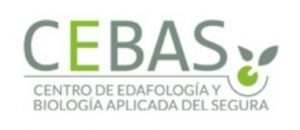Bio-fertilizers issued from anaerobic digestion for growing tomatoes under irrigation by treated wastewater: targeting circular economy concept

A. Tallou 1, F. Aziz 2,A. J. Garcia 3, F. P. Salcedo 3, F. E. El Minaoui 1 & S. Amir 1
1 Polydisciplinary Laboratory of Research and development, Faculty of Sciences and Techniques, Sultan Moulay Slimane University of Beni Mellal, Beni Mellal, Morocco
2 Laboratory of Water, Biodiversity & Climate Change, Semlalia Faculty of Sciences, University Cadi Ayyad, B.P. 2390, 40000, Marrakech, Morocco
3 Department of Irrigation, CEBAS-CSIC, Campus Universitario de Espinardo, 30100, Murcia, Spain
International Journal of Environmental Science and Technology (2021)
Abstract
Tomatoes (Solanum lycopersicum) plant were provided with bio-fertilizers issued from anaerobic digestion of olive mill wastewater without and with 1%, 5% of phosphate residues in mesophilic conditions for 25 days. 1% of raw substrates (OMW raw; OMW + 1%PR raw; olive mill wastewater + 5%phosphate residues raw; and phosphate residues) and digestates (olive mill wastewater digestate, olive mill wastewater + 1%phosphate residues digestate and olive mill wastewater + 5%phosphate residues digestate) was provided fortnightly to the plants. Reclaimed water from a wastewater treatment plant located in the study site was used for automatically controlled irrigation. It contained a low level of chemical fertilizers to compare tomato plant growth, leaf analysis, steam water potential, production yield and fruit quality results to plants fed with bio-fertilizers. Generally, parameters and results were progressively increased during the growing and harvesting stage, which refer to the essential elements that cover the plant’s needs. Plants fed with bio-fertilizers showed the most extended plant height (olive mill wastewater + 5% phosphate residues raw), and the best accumulation of essential elements in leaves (olive mill wastewater + 1% phosphate residues digestate and olive mill wastewater + 5%phosphate residues digestate). The maximum average fruit weight per treatment (35.5 g) was obtained when applying the digestates mixture of olive mill wastewater raw and olive mill wastewater + 5% phosphate residues. The maximum yield production per plant was obtained when applying phosphates residues. Bio-fertilizers (digestates) showed good performances, high fruit quality and perfect tomato yield production compared to the control plants. Results obtained during this study are considered promising regarding environmental framework. However, this study was done in a laboratory scale and needs to be applied in a large scale to provide more data on the effectiveness of the digestates application. It is also recommended to apply these bio-fertilizers on different crops and various soils for a better evaluation.

0 comments